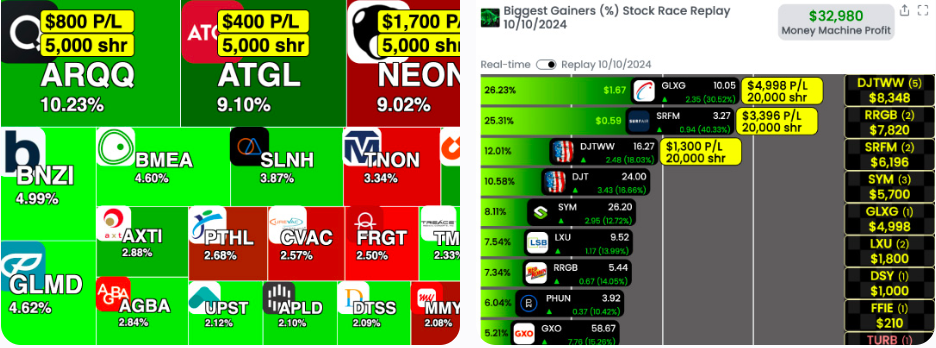20 Recommended Info For Deciding On AI Stock Predictions Platform Sites
20 Recommended Info For Deciding On AI Stock Predictions Platform Sites
Blog Article
Top 10 Tips For Assessing The Ai And Machine Learning Models In Ai Stock Predicting Trading Platforms
To ensure accurate, reliable, actionable insights, it is crucial to examine the AI and machine-learning (ML) models utilized by prediction and trading platforms. A model that is poor-designed or exaggerated can result in inaccurate forecasts as well as financial loss. Here are 10 of the most effective tips to help you evaluate the AI/ML model used by these platforms.
1. The model's approach and purpose
Clarity of purpose: Determine whether this model is designed for trading in the short term or long-term investment and sentiment analysis, risk management, etc.
Algorithm transparency: Check if the platform reveals the types of algorithm used (e.g. Regression, Decision Trees Neural Networks, Reinforcement Learning).
Customization - Find out whether you are able to modify the model to suit your investment strategy and risk tolerance.
2. Review the performance of your model using metrics
Accuracy Test the accuracy of the model's prediction. Don't solely rely on this measure however, as it may be misleading.
Precision and recall: Assess how well the model can discern real positives, e.g. correctly predicted price changes.
Risk-adjusted return: Determine whether the model's predictions lead to profitable trades, after adjusting for risk (e.g. Sharpe ratio, Sortino coefficient).
3. Check the model by Backtesting it
Historical performance: Test the model by using data from historical times to determine how it would have been performing in previous market conditions.
Test the model on data that it has not been trained on. This will help avoid overfitting.
Scenario analyses: Compare the model's performance under different market scenarios (e.g. bull markets, bears markets high volatility).
4. Make sure you check for overfitting
Overfitting: Look for models that are able to perform well using training data but don't perform as well with unseen data.
Regularization: Check whether the platform uses regularization techniques like L1/L2 or dropouts in order to prevent overfitting.
Cross-validation: Make sure the platform uses cross-validation to test the model's generalizability.
5. Review Feature Engineering
Relevant features: Check if the model uses meaningful features (e.g. volume, price and technical indicators, sentiment data macroeconomic factors, etc.).
The selection of features should ensure that the platform is choosing features with statistical importance and avoiding redundant or unnecessary information.
Dynamic feature updates: Find out whether the model is able to adapt to market changes or new features over time.
6. Evaluate Model Explainability
Interpretability (clarity) It is important to ensure that the model explains its predictions in a clear manner (e.g. the value of SHAP or feature importance).
Black-box models: Be wary of platforms that use excessively complex models (e.g., deep neural networks) without explainability tools.
User-friendly insight: Determine whether the platform provides relevant insight for traders in a way that they understand.
7. Assess the model Adaptability
Market changes. Check if the model can adjust to changes in the market (e.g. an upcoming regulation, an economic shift or a black swan event).
Continuous learning: Check if the platform continuously updates the model to incorporate new data. This can improve performance.
Feedback loops. Make sure that your model takes into account feedback from users as well as actual scenarios to enhance.
8. Examine for Bias, Fairness and Unfairness
Data bias: Make sure that the data in the training program is real and not biased (e.g. an bias toward certain industries or periods of time).
Model bias - Check to see if your platform actively monitors, and minimizes, biases within the model predictions.
Fairness: Ensure that the model does favor or not favor certain types of stocks, trading styles or even specific segments.
9. Evaluation of the computational efficiency of computation
Speed: Determine whether the model is able to generate predictions in real time or with minimal latency, especially for high-frequency trading.
Scalability: Check whether a platform is able to handle several users and massive databases without affecting performance.
Resource usage: Check to make sure your model has been optimized for efficient computational resources (e.g. GPU/TPU usage).
Review Transparency Accountability
Model documentation: Ensure that the platform has a detailed description of the model's structure as well as its training process, as well as limitations.
Third-party Audits: Check whether the model has been independently checked or validated by other organizations.
Error handling: Check that the platform has mechanisms to identify and correct model errors or failures.
Bonus Tips
User reviews Conduct research on users and research case studies to determine the performance of a model in actual life.
Trial period: Use the demo or trial version for free to test the model and its predictions.
Customer Support: Make sure that the platform has solid technical or model-specific support.
These tips will help you assess the AI models and ML models on platforms for stock prediction. You will be able to assess whether they are honest and reliable. They should also align with your goals for trading. Check out the best funny post about ai chart analysis for website recommendations including ai for stock predictions, market ai, best ai trading software, best ai for trading, investing ai, ai stock picker, best ai trading app, ai investing platform, ai for stock predictions, ai trade and more.
Top 10 Tips For Evaluating The Transparency Of Ai-Based Stock Trading Platforms
Transparency is a crucial factor when evaluating AI-driven stock prediction and trading platforms. Transparency ensures users can be confident in the operation of the platform, comprehend decisions, and verify reliability of forecasts. Here are the top 10 tips for assessing the authenticity of these platforms:
1. The AI Models are explained in Clear Terms
TIP: Make sure that the platform explains the AI models and algorithms employed to create predictions.
Understanding the underlying technology lets users evaluate its credibility.
2. Disclosure of Data Sources
Tips: Check if the platform discloses the sources of its data (e.g. historical stock data, news, or social media).
The reason: Knowing the sources of data can help ensure that the platform is using complete and accurate information.
3. Performance Metrics, Backtesting and Results
Tip Look for transparent reports of performance metrics.
This will enable users to assess the efficiency of the platform and also its previous performance.
4. Updates and notifications in real-time
Tip: Check to see whether there are any real-time updates, notifications and trades on the platform.
What is the reason: Realtime transparency gives users constant details about crucial actions.
5. Transparent Communication on Limitations
Tips - Make sure to check whether the platform is honest about the risks associated with its trading and prediction strategies.
The reason: Recognizing limitations increases trust and allows users to make better decisions.
6. Access for users to raw Data
Tip: Check if users have access to raw data or intermediate results that are used by AI models.
How do they do it? Users are able to conduct their own analyses and validate predictions by accessing the data in its raw form.
7. Transparency of Costs and Fees
TIP: Ensure that the platform clearly describes the fees, subscription costs and any hidden costs.
Transparent pricing builds trust and prevents surprises.
8. Regularly scheduled report and audits
Find out if the platform produces regular reports, or undergoes audits conducted by third parties to verify its performance.
Why independent verification enhances credibility and accountability
9. Explainability and Predictions
Tip Check to see if there is any description of how the platform makes specific predictions and suggestions (e.g. features with priority, decision trees).
Explainability is a software that assists users in understanding AI-driven decision-making.
10. Customer Feedback Channels, Support and User Feedback
TIP: Make sure that the platform offers open channels for feedback and support from users and provide a clear response to users' concerns.
The reason is that responsive communication indicates an interest in transparency and user satisfaction.
Bonus Tip: Regulatory Compliance
Check that the platform is in compliance with relevant financial regulations and discloses the status of its compliance. This is another level of trust and transparency.
Through a thorough examination of these factors you will be able to judge whether an AI stock prediction and trading platform operates transparently, enabling you to make informed decisions and build confidence in the capabilities of AI. Read the top find out more on best ai stock prediction for site recommendations including ai copyright signals, ai investment tools, investing with ai, ai options trading, ai tools for trading, can ai predict stock market, how to use ai for copyright trading, invest ai, how to use ai for stock trading, free ai tool for stock market india and more.